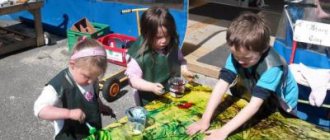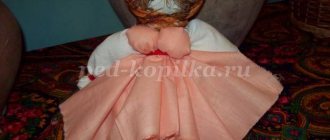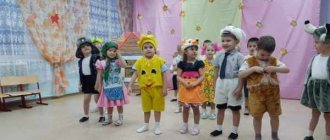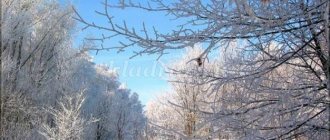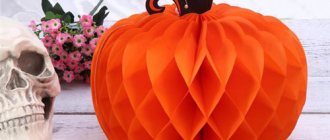Open lesson on manual labor in the preparatory group “Journey to the World of Flowers”
Lesson on artistic work for the preparatory group
"In the kingdom of indoor plants"
Educational areas:
Cognitive development.
Speech development: question and answer
Artistic and aesthetic development: making flowers from available natural materials.
Integration of activities:
aesthetic, communicative, speech, cognitive.
Lexical topic
: Indoor flowers.
Type of lesson:
Integrated
Forms of educational activities
: Occupation travel.
Equipment:
1 table: cones, ear sticks, cut in half, pieces of plasticine, oilcloths for labor, napkins, a sample of a cactus flower made from cones. Table 2: colored plasticine, stacks, oilcloths for modeling, wet wipes, color samples, table 3: colored paper, scissors, glue, glue brushes, waste container, oilcloths for manual labor, bases for placing finished colors, color samples.
Target:
Consolidating ideas about indoor plants, their names and how to care for them. Consolidating the ability to use natural materials to make indoor flowers, consolidating appliqué skills and working with plasticine.
Tasks:
Educational:
Strengthen skills in working with natural materials, skills in working with plasticine, and appliqué skills. Strengthen children's knowledge about indoor plants.
Educational:
Develop an interest in designing from natural materials, an interest in working with plasticine and paper.
Educational:
Cultivate a love for nature. Cultivate accuracy and caution.
Planned result:
Children confidently name indoor plants and how to care for them. Children know how to use various natural materials to make crafts. Children know how to use plasticine. Children have skills in working with paper, scissors, glue, have cutting skills, and know how to work in a team.
Educator.
Guys, an unusual guest came to us today. He was sent to us by the queen of flowers, but what he wants to tell us, we will now find out. (read the message from the Queen of Flowers).
Message: In my country, indoor flowers have stopped blooming, I don’t know what happened and I ask you to help me. Let's help the queen of flowers?
Children:
We agree to help the queen of flowers.
Educator.
Then, guys, we will go with you on a long journey, to the castle of the flower queen. but to do this we need to complete tasks and follow the arrows. Do you agree?
Children:
We agree.
Educator:
Then let's go. Look at the green arrow in front of us, what kind of task is there?
First task : green arrow. (inscription on the back)
NAME THE FLOWERS
Educator.
Guys, we need to name the indoor flowers in our group. What flowers do you know, name them?
Making toys in class
In modern preschool education, it is necessary to take into account the complex thematic principle of constructing the educational process, which involves identifying the leading topic of the day, week or month. A cycle of classes subordinated to one topic allows the child to create a holistic perception of an object or phenomenon. The child “lives” the topic in different types of children’s activities (playing, drawing, designing, etc.).
The teachers of our preschool department have developed notes for thematic lessons on making toys
and crafts based on the theme of the week, implemented in direct educational activities in different sections of the program.
Summary of direct educational activities on manual labor in the preparatory school group.
Topic of the week
: “The most fun holiday.”
Topic of the lesson on artistic manual labor
: “Lanterns for the Christmas tree.”
Target
: learn to cut paper along the contour, fasten and decorate crafts.
Handout
: blanks of colored paper 15X20 cm with vertical lines applied 1.5 cm apart, not reaching the edge of the blank by 2 cm, a strip of colored paper measuring 2X10 cm, scissors, glue, brushes, stands for brushes, napkins, oilcloths.
Progress of the lesson
The teacher reminds the children about the lesson where they talked about New Year traditions and decorating houses for the New Year. The symbol of the New Year holiday is the Christmas tree. It’s very nice when the tree hangs not only toys bought in the store, but also ones made by yourself.
The teacher invites the children to make New Year's lanterns from paper. Draws attention to the fact that even using such a simple material as paper, you can get original and beautiful decorations.
Stages of work
:
1. Fold a sheet of paper in half along the long side, with the colored side facing inward. 2. From the fold line, make cuts along the drawn contour. 3. Unfold the workpiece. 4. Decorate the edges of the craft sheet with applique. 5. Roll the sheet into a tube, glue the edges along the long side. 6. Squeeze the tube a little at the bottom and top at the same time - you’ll get a flashlight. 7. Decorate the strip with applique. 8. Glue the strip inside the flashlight to create a handle. The flashlight is ready.
The teacher reports that a flashlight can serve not only as a Christmas tree decoration, but also as a decoration for a small vase or glass; several lanterns suspended on a serpentine will turn into a multi-colored garland.
At the end of the lesson, the teacher offers to decorate the group room.
Nadezhda Golitsyna, senior teacher,
Lyudmila Rudneva, teacher of secondary school No. 1716 “Eureka-Ogonyok”, Moscow
Summary of an open lesson on manual labor for older children “Surprise Toy”
Objectives: -improve the ability to work with paper: bend the sheet in different directions, smooth the folds, cut along the folds. - develop creative imagination and artistic taste. — cultivate accuracy, teach how to treat finished products with care. Goal: - consolidate acquired skills in creative transformation of objects. Materials: colored paper, scissors, glue, napkins, Pinocchio toy, audio recording with the song 'Bu-ra-ti-no!' (from the movie 'The Adventures of Pinocchio'), tray, wonderful bag with surprises. Preliminary work: reading A. Tolstoy’s fairy tale “The Golden Key or the Adventures of Pinocchio.”
Progress of the lesson.
Children, together with the teacher, enter the group. The guys greet the guests. Voss: - Guys, do you like surprises? Children: Yes. Voss: -I really like surprises. There is one fairy-tale hero who cannot live without surprises. Guess the riddle. My father has a strange boy, unusual, wooden. He is looking for a golden key on land and under water. He sticks his long nose everywhere. Who is this? Children: Pinocchio. Question: Pinocchio wanted to make a gift for his friends from the fairy tale in which he lives, but he didn’t succeed. Oh, Pinocchio, where are you? Oh, here he is, why are you hiding? (Pinocchio whispers something in his ear, the teacher nods) Voss: Guys, Pinocchio asks you to help him make surprises for his friends. Do you agree? Children: Yes. Voss: (addresses the toy Pinocchio) -Who are your friends? (Pinocchio is silent). Voss: - Guys, help. What are the names of Buratino's friends? Children: -Malvina, Pierrot, Harlequin, poodle Artemon, tortoise Tortila. Voss: Which other fairy-tale characters do you know? Children: - Karabas Barabas, talking cricket, dad Carlo, Giuseppe, cat Basilio, fox Alice, Duremar, rat Shushara. Voss: (shows a box with a surprise) - This is the surprise we will help you make Pinocchio. The teacher places the Pinocchio toy at the table with the children. Vos-l: (Explanation of work) - And it’s done like this. First you need to make a box: take a rectangular sheet, 2 stripes are drawn on it, you need to bend it along the stripes. We bent it in strips, turned it around, put the narrow side towards us and bend corner to corner in half away from us and again in half away from us. Let's expand. In the top row we got 3 squares, cut out the outer ones along the fold line, leaving 1 square - this is the lid of the box. We make 2 cuts from the lid of the box and 2 more cuts at the bottom opposite the first ones. Our box is almost ready, all that remains is to glue it together. I spread glue on the 2 outer squares near the lid and the 2 outermost squares. We do it like this: bend over, spread, bend over, spread, glue one, then the other, put on top of each other, bend the bottom squares, spread, glue everything in the middle of the box, you get a box. Voss: - Pinocchio, do you understand how to make a box? Aren't you tired? And now a surprise, we have a cheerful face from the box. The face is held on the paper by a folded spring. Take 2 strips of paper. Glue the 2 ends together and bend one or the other strip to the end. The result is a two-color spring. Glue a spring to the bottom of the box, and glue a cheerful face to the top tip. Look what happened... Voss: - And now the guys will do it. Guys, tell me, do we make a box or a spring first? Children: -A box, then a spring. (Explaining to children how they will do the work). Voss: -Pinocchio is tired, let's stretch his arms and legs.
Physical education minute:
Pinocchio stretched, 1 - bent over, 2 - straightened up, spread his arms to the sides, Apparently he didn’t find the key. To get the key for him, you have to stand on your toes. Stand tighter than Pinocchio, Here is the golden key. Voss: - Sit down guys. Well done, you need to stretch your fingers.
Finger gymnastics:
Katina's dolls are sitting in a row on a large sofa. Two bears, Pinocchio, and cheerful Cipollino, And a kitten and a baby elephant. One, 2, 3, 4, 5 Let’s help our Katya count all the toys. Voss: - Now you will make the surprise yourself. Remember to use scissors carefully. And you Pinocchio, sit and look carefully, the guys will work for a long time, but diligently. The guys make surprise boxes and place them on a tray. Voss: - Thanks, guys! They helped me out, now I will give gifts to my friends, and leave surprises for you as a gift. (wooden eggs for painting). Pinocchio leaves.
Author: Kozaeva Svetlana Aleksandrovna, teacher, MBDOU kindergarten No. 55 “Cornflower”, Murmansk, Russia
The article is published in the author's edition
MAGAZINE Preschooler.RF
Demidova Nina Vasilievna Teacher of Children's School No. 37 "Golden Key" Yelets, Lipetsk region,Program content: Expand children's knowledge and understanding of the features of the appearance of butterflies. Continue to develop skills in working with natural materials. Learn to plan your work (when making crafts, analyze and compare individual operations, highlight the method of action, the sequence of their implementation). To form a desire for aesthetic transformation of the environment, aesthetic taste and work culture. Develop fine motor skills of the hands. Materials for the lesson: floral sponge (blanks cut out by the teacher in the shape of a butterfly’s body); bay leaf leaves; seeds of corn, pumpkin, watermelon, sunflower; self-adhesive in different colors; scissors.
Progress of the lesson: Teacher. Guys, I want to tell you an interesting fairy tale called “Magic Transformation.” (The teacher puts a beautifully packaged box on the table, shows and tells a fairy tale). Teacher. In this magic box lives a fairy tale about a caterpillar who lived in an apple tree in the garden and loved to eat leaves. The caterpillar lived well and freely on the tree, there was a lot of food, the sun was warm, and if it was cold and it was raining, the caterpillar wrapped itself in leaves, warmed up and fell asleep until the morning. And in the morning she got down to business again, ate, crunched juicy leaves, basked in the sun and enjoyed life. But then autumn came, the leaves on the apple tree became dry and yellow, and the winds and cold were so strong that a blanket of leaves no longer saved our caterpillar. And so, waking up in the morning, cold and wet, she decided to build a house, and, of course, only from the threads that she makes herself. Without delaying the work, she began building her house. She worked for a long time, neither slept nor ate for three days and three nights, and the house turned out just fine, round, soft, warm, but this house had no windows or doors. And our caterpillar became so warm and cozy that she fell asleep and slept through the entire cold winter and early spring, and woke up only when the apple tree blossomed. The caterpillar reached out, for some reason she felt very cramped in her house, the cocoon cracked and she found herself on the street. But what happened, it’s not our glutton caterpillar and graceful beauty butterfly. The butterfly really wanted to eat, but she did not and could not eat the leaves, she wanted something very tasty and sweet. She fluttered up and flew to the most beautiful flower, then to another, then to a third. Having eaten, she sat down on a flower and became sad, and only the breeze gently rocked the beauty in the wind. Teacher. - Guys, why did the beautiful butterfly suddenly feel sad? Children. - (Answers). Teacher. - That's right guys, a butterfly has no friends! - Guys, can we help the burning butterfly? Children. (Answers). Teacher. - But as? Children. Let's make the same beautiful butterflies. Teacher. - But first, I suggest you consider the diagram. Children. (They examine, ask questions). The teacher explains. Before starting work, he suggests doing a short warm-up. Physical education break. The flower was sleeping, and suddenly woke up, not wanting to sleep anymore. Started up, stretched, soared up and flew. Close your eyes, relax, blink your eyes. Raise your hands up (inhale) Look at your hands. Arms bent to the sides (exhale) Shake your hands, look left and right.
Practical part. Teacher. Today we will make a butterfly from natural material. The body of the butterfly will be made of floral sponge, and the wings will be made of laurel leaves, we will attach them to the body, but first you need to decorate the wings. To do this, you need to take colored self-adhesive paper and cut out a pattern for the wings from it. It must be remembered that the pattern on the wings of a butterfly is symmetrical, that is, one wing is exactly reflected in the other, like in a mirror. Therefore, when gluing color patterns on one wing, it is necessary to simultaneously make the same patterns on the other in the same color, size and location. Decorate the body with seeds, make eyes and antennae. While working, we remind children that the floral sponge is a very soft and fragile material, and you need to be very careful when working with it.
Final part. Teacher. He invites the children to “let their butterfly fly” and notes that our group has turned into a green meadow, over which motley-winged beauties—butterflies—flutter merrily, and not one of them is the same. Reads a poem by A. Sobrasov Butterfly, let's be friends! It's more fun to live in friendship! We have flowers in the garden, fly over them. No rain over the garden. No need to worry in vain. Don’t worry about anything. Hide under my Panama hat!
| Next > |
